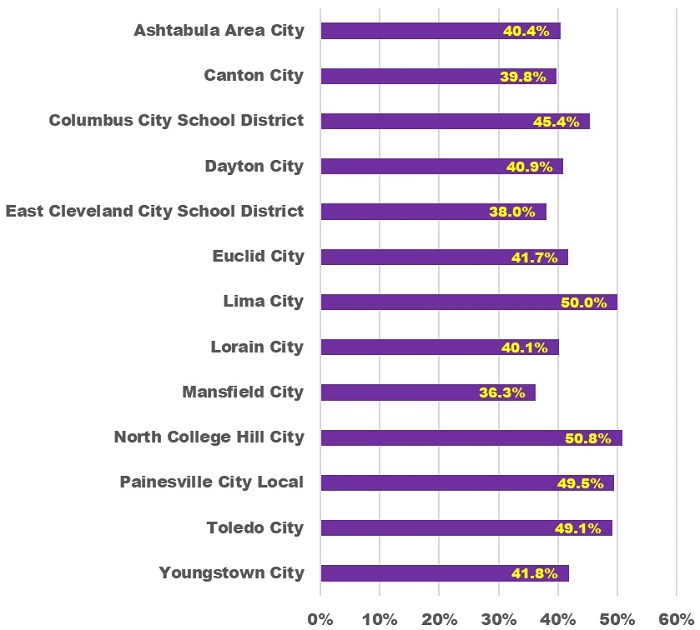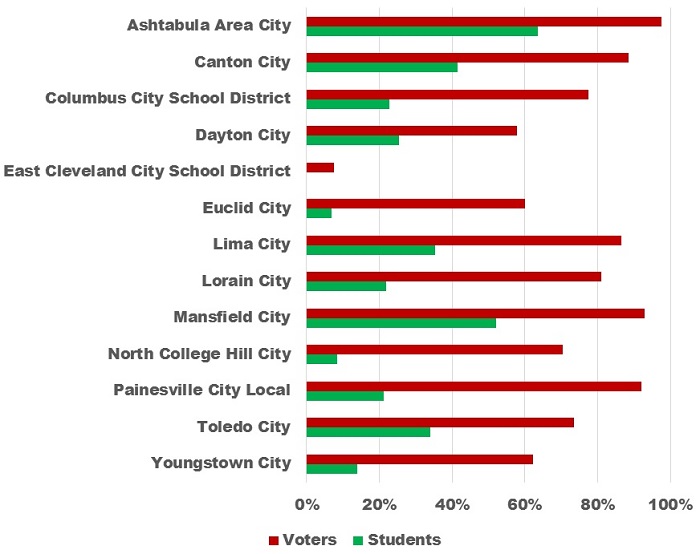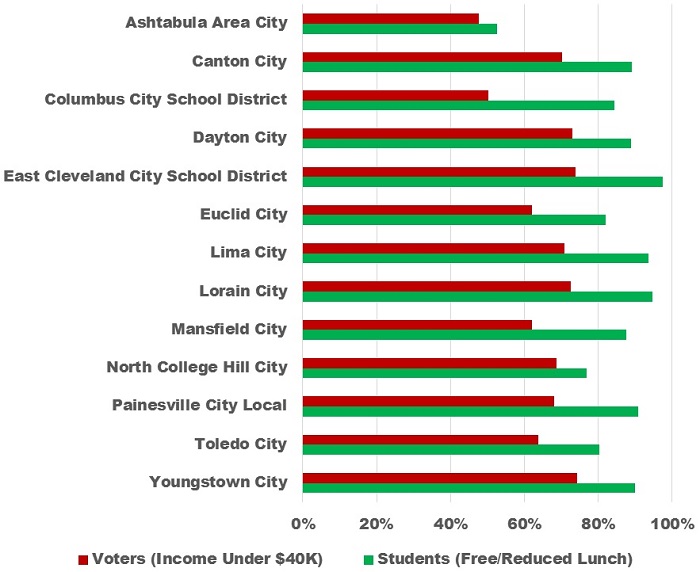NOTE: The Thomas B. Fordham Institute occasionally publishes guest commentaries. Their views do not necessarily reflect those of Fordham.
As Ohio lawmakers struggle to agree on a budget for the next two years, the future of state efforts to turnaround our most struggling public school districts remains a key sticking point. At the heart of this debate is a fundamental disagreement about “local control”—whether key school governance and policy decisions should remain in the hands of school boards elected by local voters when struggling districts fail to improve student achievement.
The State House approach doubles down on “local control,” eliminating the current academic-distress-commission model, and takes as an article of faith that, armed with expert advice (and perhaps additional resources), local school boards will do what is necessary to improve student outcomes. Some state senators, on the other hand, point out that local control is what got low-performing districts into their current predicament, so simply preserving the status quo is unlikely to produce the academic growth students desperately need.
In my view, a fair reading of the evidence is closer to the latter perspective: “Local control” is a worthy principle, but is unlikely to fix Ohio’s struggling schools. Here is why.
Voters don’t reward achievement
In a study published several years ago, my colleagues and I examined school board turnover in Ohio school districts between 2002 and 2013, as well as the results of school board elections in the state’s largest metro areas.
Our findings were striking. We found no evidence that voters punish school board members for low student performance. Indeed, we found no relationship between student achievement and local school board election outcomes—or turnover on school boards—at all. Without electoral accountability at the ballot box, it’s not obvious why we should expect “local control” to create pressure for boards overseeing failing schools to take steps to improve them.
Although we were initially surprised by these results, they seem obvious in retrospect. Public schools are there to serve the interests of students. But students don’t vote. Local elections may be a good mechanism to ensure that voter interests and preferences drive public policy, but the model breaks down when the most important constituents cannot participate in the political process.
Voters don’t look like students
Readers at this point will probably roll their eyes and think, “Of course kids don’t vote! But their parents do, isn’t that enough to incentivize school boards to provide a good education?”
Except it turns out that parents are not a pivotal voting bloc in Ohio school board elections either. Figure 1 summarizes the composition of the November 2017 electorate in each of Ohio’s F-rated districts with an elected board. The figure combines data from the Ohio state voter file, which indicates which voters turned out on which election dates, as well as additional information about these voters from one of the country’s leading micro-targeting firms. Rarely did voters identified as “likely parents” based on commercial data make up a majority of the voting population. In Youngstown and Lorain, the first two districts to be taken over by an appointed academic distress commission, six in ten voters had no children in their household.
Figure 1: Percentage of voters who chance of being parents is “likely” or “possible,” November 2017, by district

Note: Parent status is estimated by Catalist, a micro-targeting firm, which commercially available data to determine how likely each voter is likely to have a child in the household.
In Ohio, school boards are elected during low-turnout, odd-year elections, and as we’ve shown in another study, the electorate during these elections tends to be disproportionately elderly.
As a result of this age-skew, most voters who elect school boards in Ohio’s lowest-performing districts don’t actually use the public schools—and, more importantly, these voters look nothing like the students these schools educate. During the last school board elections, for example, white voters accounted for more than 70 percent of the electorate in these districts, although nearly 75 percent of the students enrolled there were non-white.
Figure 2. Percentage of students and school-board-election voters who are white, 2017, by district

There is a similar, though smaller, gap in terms of socioeconomic status. In the average F-rated district, 85 percent of the students qualified for free or reduced-price lunch in 2015. By contrast, only about 66 percent of the voters in 2017 had a family income of under $40,000, the rough cutoff for reduced-price-lunch eligibility for a family of typical size.
Figure 3. Percentage of school-board-election voters with a family income under $40,000 in 2017, versus percentage of students qualifying for free or reduced-price lunch in 2015, by district

Note: Free-or-reduced-price-lunch status data are taken from the Stanford Education Data Archive, with the numbers imputed for districts that participate in the Community Eligibility Provision program to provide free lunch to all students regardless of income.
In local democracies, adult interests trump kids’ needs
Although there’s much worth celebrating about democracy, it’s an imperfect system when it comes to the provision of high-quality public education. When school boards must pander to their constituents to get reelected—and when board members who don’t are simply replaced by those who do—we get a system that is much more suited to serving the interests of the adults who pay attention to local politics and vote in local elections.
That is one reason why school boards spend so much time on adult issues like collective bargaining and contracting. Those who work in local schools or sell goods and services to them care a lot about who sits on school boards, so these interest groups are particularly likely to take part in local elections and to show up at school board meetings and make their opinions known. Although parents might show up when an item on the agenda deals specifically with their schools or programs their children participate in, there is no organized constituency demanding overall improvement and reform.
As one recent book by Clarence Stone and Jeffrey Henig about failed education reform efforts in America’s largest cities presciently concludes, “That these bursts of attention proved ephemeral and ineffective was not because various sectors of the city were indifferent, but because diffuse concerns and scattered activities never generated a community synergy that could be sustained in the face of slow progress and competing demands on the public’s attention and purse.”
For everyone who wants to improve student outcomes—particularly for our most disadvantaged kids—this is an important lesson that too often gets overlooked. More “local control” won’t fix our schools because it will not create the accountability and incentives necessary to drive real change.
Vladimir Kogan is an associate professor at the Ohio State University Department of Political Science and (by courtesy) the Glenn College of Public Affairs. His research focuses on educational governance and local democracy.


